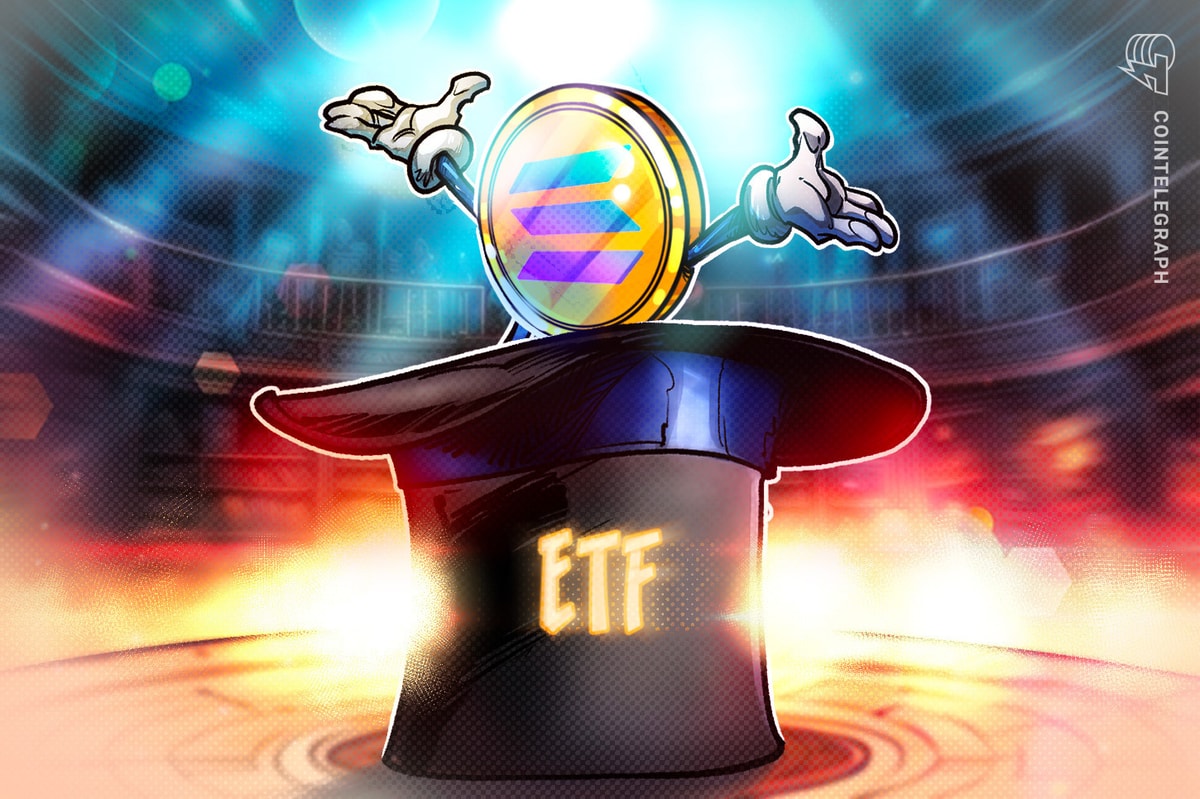Solana’s journey from a memecoin hub to a serious blockchain contender hinges on the approval of a Solana ETF, which would bring institutional trust and unlock its potential for large-scale financial applications like payments and trading.
Opinion
Opinion by: Chris Chung, CEO of Titan
When Solana launched in 2020, co-founder Anatoly Yakovenko had the grand vision of becoming the Nasdaq on the blockchain — the home for onchain financial markets. Five years later, the memecoin trading activity we’re seeing on Solana is more akin to penny stocks than the tech giants that make up the Nasdaq index, like Apple or Nvidia. There are definitely “blue-chip” tokens like Jupiter (JUP) or Drift (DRIFT), but the attention has been focused on memecoins.
Indeed, memecoins have become so synonymous with Solana that some in the industry see it as purely a “meme chain.” This isn’t exactly a surprise: Solana’s Pump.fun memecoin launchpad has seen over 7.5 million tokens created since its inception, resulting in more than $550 million in revenue.
This has been a boon for the ecosystem, pushing infrastructure upgrades and onboarding new users, but Solana’s potential goes far beyond memecoins. The time has come for Solana to become a more serious blockchain, and the approval of a Solana (SOL) exchange-traded fund (ETF) — which is all but guaranteed this year — is just the catalyst needed to help Solana position itself as far more than just a “meme chain” to the general public.
A helping hand from the SEC
Many wouldn’t have thought this possible last year, but it appears the US Securities and Exchange Commission is fully prepared to push through a Solana ETF in 2025. Under new leadership, the agency first acknowledged Grayscale’s SOL ETF application and is now seeking public comment on four Solana investment products.
This perhaps comes as no surprise, given that US President Donald Trump gave Solana a significant endorsement by choosing it as the home for his viral memecoin, TRUMP. An ETF is, however, a much bigger deal because it will propel Solana into the world of traditional finance. And the chances of approval are good: Polymarket traders currently assign an 85% likelihood to a fall launch.
This approval will be instrumental in shifting institutional perceptions of Solana because it provides investors with a regulated vehicle to gain exposure to SOL without any of the risks of owning the token onchain.
A credibility play
An ETF, however, also enhances the credibility of any crypto asset in the TradFi world. We’re already seeing this shift in sentiment playing out, with Franklin Templeton, one of the world’s top asset managers, launching a US government money fund on Solana.
Recent: Pump.fun founder calls for memecoin guardrails amid ‘Libragate’
This is significant because it recognizes Solana for what it was designed to be: a serious blockchain supporting large-scale trading and real-life use cases. And a key one this year will be payments and remittances.
Payments certainly don’t have the same appeal as memecoins. Yet this was the original use case for blockchain when the Bitcoin white paper was published in 2008. Its pseudonymous creator, Satoshi Nakamoto, clearly positioned Bitcoin as peer-to-peer cash.
Since then, though, the adoption of blockchain for payments has remained limited. Only 0.2% of e-commerce merchants globally accepted crypto in 2022 — a far cry from a global payments network.
A $20-trillion opportunity
Yet, the opportunity is enormous. This year, the payments industry is projected to reach $20.37 trillion. That’s six times the market capitalization of all cryptocurrencies combined ($3.23 trillion). And we’re already seeing signs of the growing importance of digital assets in the payments landscape.
This includes payments giant PayPal entering the crypto world with the launch of its proprietary stablecoin, PayPal USD (PYUSD). Meanwhile, President Trump’s social media company, Truth Social, is exploring a crypto payments service called TruthFi. At the same time, Elon Musk’s X is set to start accepting crypto payments via the new X Payments platform. It seems boring-but-necessary crypto payments are finally about to have their day in the sun.
Solana is well-positioned to take a leading role in this shift. It already boasts a large, active user base and saw its stablecoin supply double in January at nearly $12 billion. Plus, it was battle-tested earlier this year by the launch of the TRUMP memecoin, and this onslaught was handled well.
On top of this, Solana already has the infrastructure to support a retail payments network. It boasts cheap and fast transactions, and its payment protocol, Solana Pay, allows people to pay with crypto, including USD Coin (USDC), by simply scanning a QR code with their mobile phones — all the ingredients of a frictionless e-commerce experience.
A grown-up blockchain
Payments are just the beginning. Yakovenko’s vision of the Nasdaq on the blockchain is a grander one — a high-performance blockchain that can support large-scale financial user cases, from sophisticated trading to lending.
Solana has been honing the infrastructure necessary for this all year — Pump.fun forced the upgrades and fixes required to make it ready for mass adoption. The ETF approval will help Solana shed its “memecoin” reputation. Solana has all the potential — all it needs is the institutional trust to achieve it.
The shift away from its reliance on memecoin trading will also make Solana more resilient and ready to weather the next market downturn. Yakovenko’s vision is finally within reach five years after Solana’s launch.
Opinion by: Chris Chung, co-founder and CEO of Titan.
This article is for general information purposes and is not intended to be and should not be taken as legal or investment advice. The views, thoughts, and opinions expressed here are the author’s alone and do not necessarily reflect or represent the views and opinions of Cointelegraph.
This article first appeared at Cointelegraph.com News

